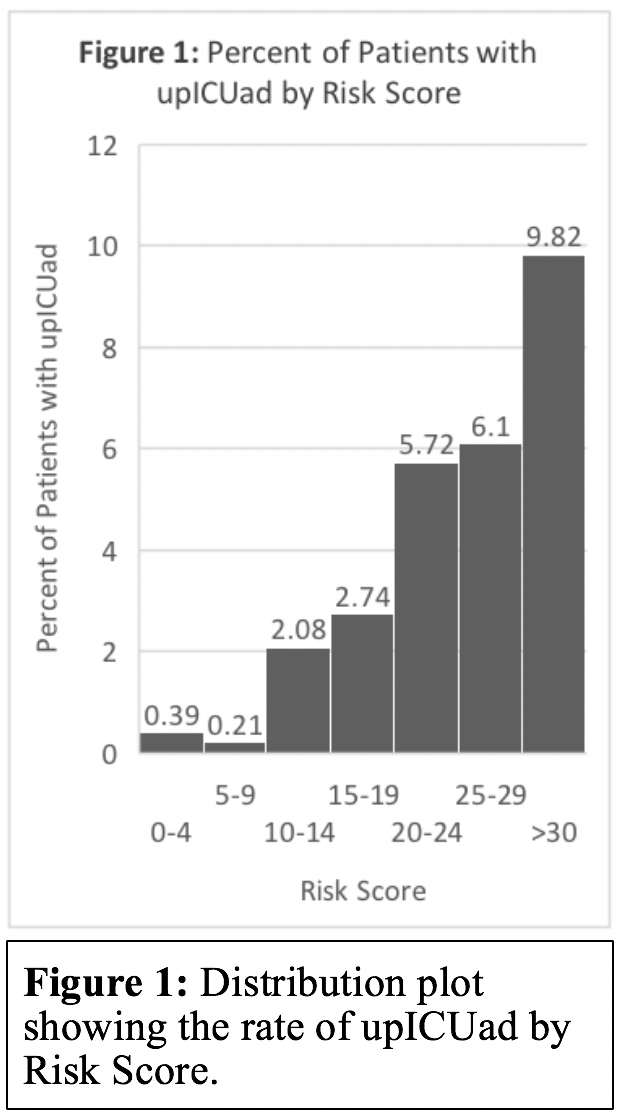Defining Risk and Risk Factors for Unplanned ICU Admission of Trauma Patients: Developing a Predictive Risk Score
*Stephen E Ranney, Ajai K Malhotra, *Peter Callas, *Lloyd Patashnick, *Samy Ramadan, *Jennifer Gratton, *Amy Sharpe, *Deirdre LaFrance, Margaret A Tandoh, William E Charash, *Gary C An, *Tim H Lee
University of Vermont Medical Center, Burlington, VT
Objective: Identify risk factors of unplanned ICU admissions (upICUad) in trauma patients and develop a predictive risk score for upICUad.
Design: Retrospective, cohort study using the Trauma Research Repository.
Setting: Rural, academic, ACS verified Level-1 Trauma Center.
Patients: Adult, trauma patients admitted to the floor from the emergency department over a 10-year period (January, 2008 to April, 2018).
Interventions: Trauma patients admitted to the floor who experienced an upICUad were compared to similar patients without an upICUad.
Main Outcome Measures: Patient characteristics [age, Charlson Comorbidity Index (CCI)] and body-region injury severity (AIS scores) were analyzed using univariate methods and multivariate logistic regression to identify independently associated risk factors. A predictive risk score for ICUbb was developed by assigning weighted values based on log-risk coefficients to identified risk factors.
Results: 7,206 patients met criteria of which 155 (2.1%) experienced an upICUad. Age, CCI, and severe injuries (AIS greater than or equal to 3) to chest, spine, and lower extremities were identified as independent risk factors for upICUad (Table 1). Increasing risk score was associated with higher rates of upICUad (Figure 1).
Conclusions: Increasing age, higher CCI, and severe injuries to chest, spine, and lower extremities are associated with upICUad. A score <20 indicates low risk of upICUad, while a score > 20 suggests high risk of upICUad and may warrant direct admission to the ICU.

Back to 2019 Abstracts




